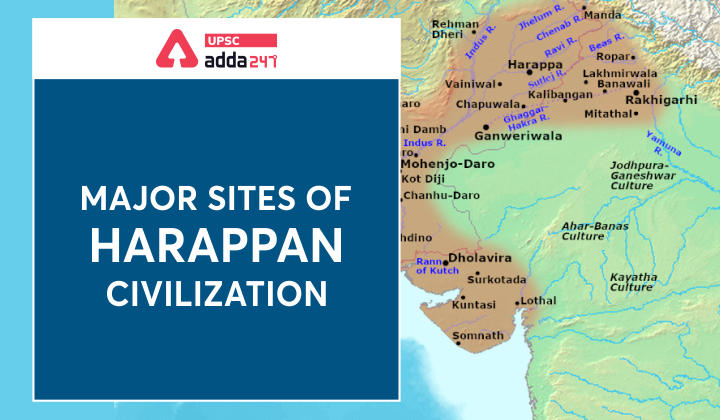The Indus Valley Civilisation (IVC), also known as the Indus Civilisation, or Harappan civilization was a Bronze Age civilisation in the north western regions of South Asia. It lasted from 3300 BCE to 1300 BCE, and in its mature form from 2600 BCE to 1900 BCE. The Indus civilisation is also known as the Harappan Civilisation, after its type site, Harappa, the first of its sites to be excavated early in the 20th century in what was then the Punjab province of British India and is now in Pakistan. In this article, we will discuss the various sites of Harappan civilization and their excavation.
| Year | Site | Location | Excavated by | Major findings |
| 1921 | Harappa | Sahiwal District, Punjab; near the banks of Ravi | Daya Ram Sahni |
|
| 1922 | Mohenjo-Daro | Larkana District of Sind; near the bank of Indus | R. D Banerjee |
|
| 1929 | Sutkagendor | Baluchistan; on Dast river | Stein |
|
| 1931 | Chanhudaro
(only city without a citadel) |
Mullan Sandha, Sind; on the Indus river | N G Majumdar |
|
| 1935 | Amri | Close to Balochistan; on the bank of Indus river | N G Majumdar |
|
| 1953 | Kalibangan | Hanumangarh District, Rajasthan on the bank of Ghaggar river | Amlanand Ghose |
|
| 1953 | Lothal | Gujarat; on Bhogva river near the Gulf of
Cambay |
R. Rao |
|
| 1964 | Surkotada | Gujarat | J P Joshi |
|
| 1974 | Banawali (Only city with radial streets) | Fatehabad district of Haryana | R S Bisht |
|
| 1985 | Dholavira (Only site to be divided into three parts) | Gujarat; in Rann of Kutchchh | R S Bisht |
|
Also Read:



 TSPSC Group 1 Question Paper 2024, Downl...
TSPSC Group 1 Question Paper 2024, Downl...
 TSPSC Group 1 Answer key 2024 Out, Downl...
TSPSC Group 1 Answer key 2024 Out, Downl...
 UPSC Prelims 2024 Question Paper, Downlo...
UPSC Prelims 2024 Question Paper, Downlo...
